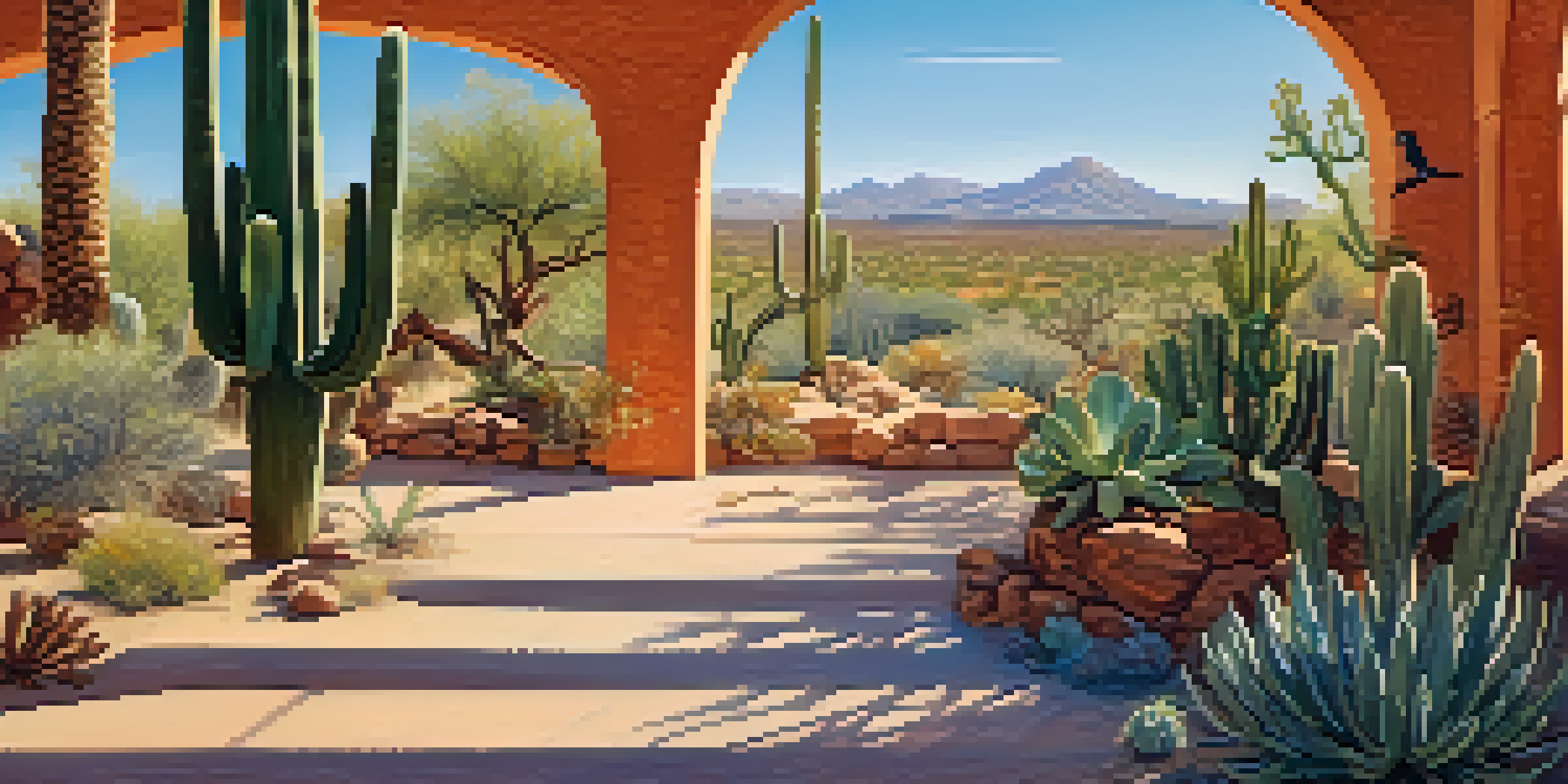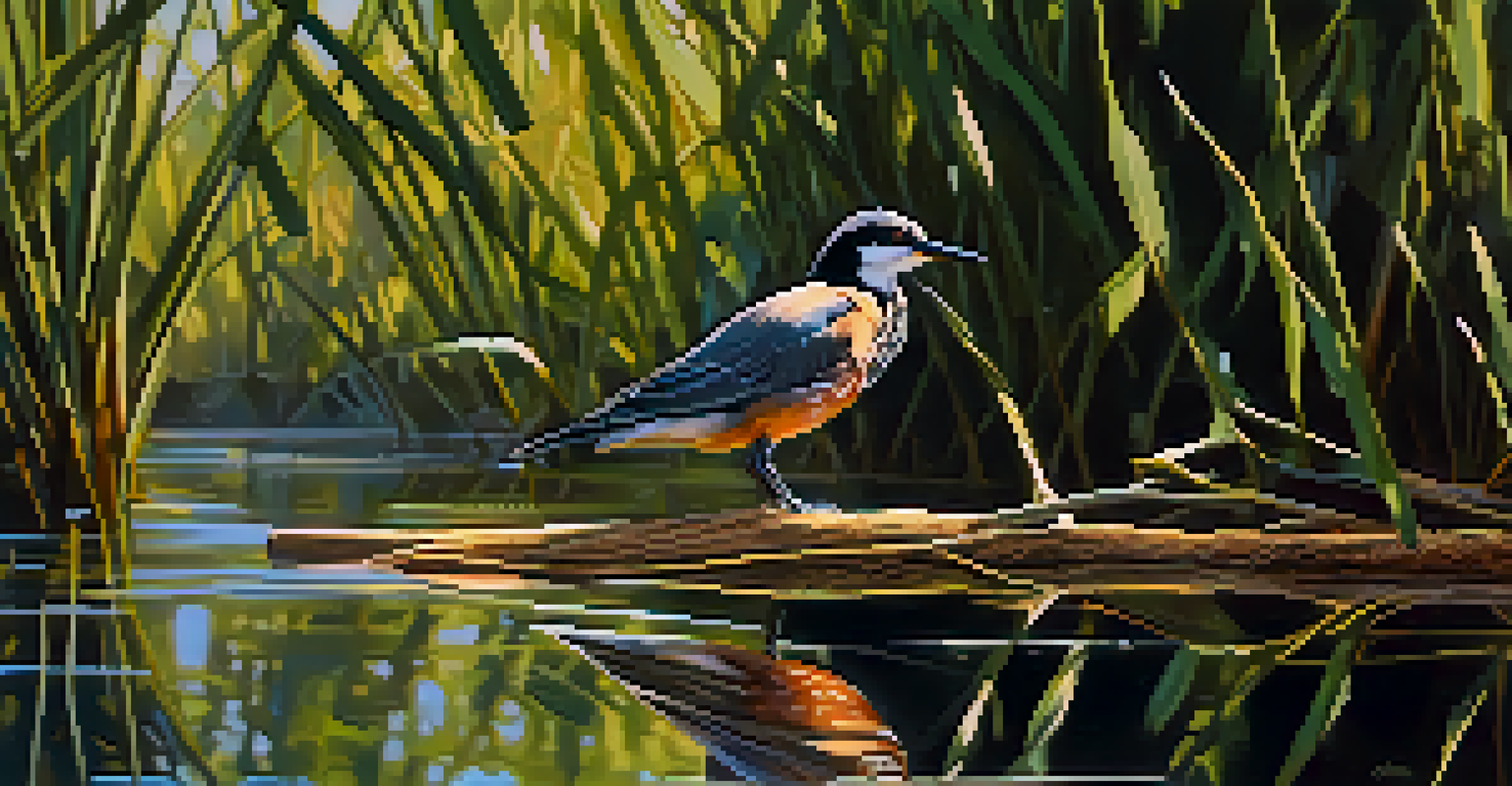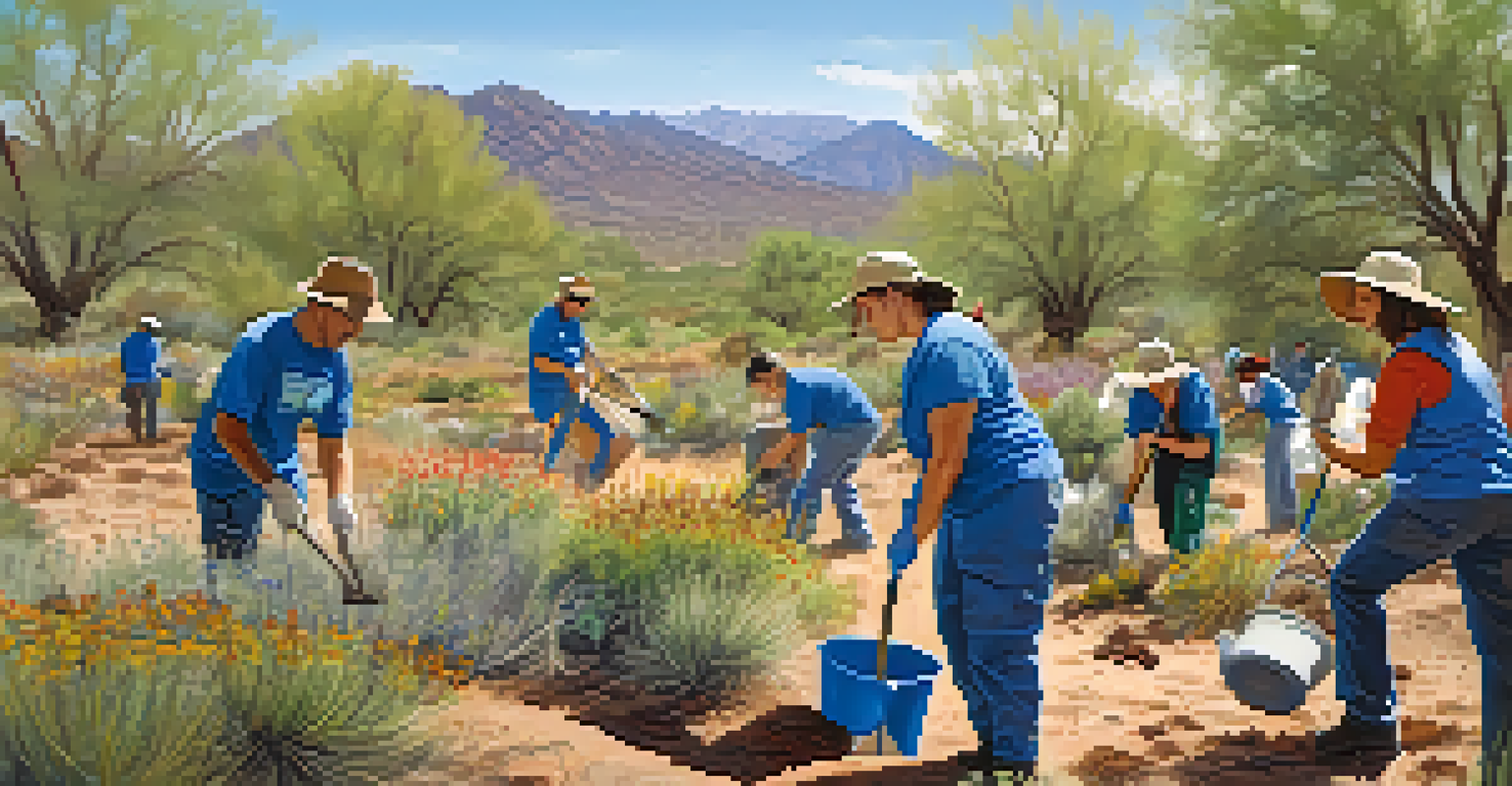The Role of Tucson's Wildlife Sanctuaries in Conservation Efforts

Overview of Tucson's Unique Wildlife Sanctuaries
Tucson is home to several wildlife sanctuaries that play a pivotal role in preserving local fauna. These sanctuaries provide a safe haven for animals, many of which face threats from habitat loss and urban development. By offering these protected environments, the sanctuaries not only support wildlife but also educate the public about the importance of conservation.
In every walk with nature one receives far more than he seeks.
One of the most notable sanctuaries is the Arizona-Sonora Desert Museum, which combines a zoo, botanical garden, and natural history museum. Here, visitors can learn about the unique ecosystems of the Sonoran Desert and the various species that inhabit it. This immersive experience fosters a deeper appreciation for wildlife and encourages visitors to support conservation efforts.
Another important sanctuary is the Sweetwater Wetlands, a vital habitat for migratory birds and other wildlife. This area showcases the importance of wetland ecosystems in maintaining biodiversity and provides a natural space for both animals and humans to thrive.
The Role of Education in Conservation Efforts
Education is at the heart of Tucson's wildlife sanctuaries, as they aim to inform the public about conservation issues. Through workshops, guided tours, and interactive exhibits, these sanctuaries engage visitors of all ages. By raising awareness about local wildlife and environmental challenges, they inspire individuals to take action in their own communities.

For instance, many sanctuaries offer school programs that teach children about endangered species and the importance of protecting their habitats. These hands-on experiences help foster a sense of responsibility and connection to nature. When children learn about wildlife conservation early on, they are more likely to become advocates for the environment as adults.
Conservation Through Education
Tucson's wildlife sanctuaries prioritize education to raise awareness about conservation issues and inspire individuals to take action.
Moreover, educational initiatives extend to adults, with lectures and volunteer opportunities that encourage community involvement. Engaging the public in conservation efforts ultimately strengthens the impact of these sanctuaries.
Breeding Programs for Endangered Species
Tucson's wildlife sanctuaries also play a critical role in breeding programs aimed at endangered species. These initiatives focus on species that are at risk of extinction, providing a controlled environment where they can thrive. Successful breeding programs not only help increase population numbers but also contribute to genetic diversity.
The future will be green, or not at all.
For example, the sanctuaries often collaborate with other conservation organizations to ensure the best practices are followed. This collaboration helps create a network of support for endangered species, enhancing their chances of survival. The goal is to eventually reintroduce these animals into their natural habitats, where they can contribute to the ecosystem.
By participating in these breeding programs, sanctuaries highlight their commitment to protecting biodiversity. These efforts serve as a reminder of the delicate balance within ecosystems and the importance of preserving threatened species.
Habitat Restoration Initiatives
In addition to direct animal care, Tucson's wildlife sanctuaries engage in habitat restoration projects. These initiatives aim to restore and rehabilitate natural environments that have been degraded by human activity. By focusing on habitat restoration, sanctuaries help create sustainable ecosystems where both wildlife and plants can flourish.
For instance, some sanctuaries work to remove invasive species that threaten local flora and fauna. By restoring native plant populations, they create healthier habitats that support a diverse range of wildlife. This approach not only benefits the animals but also helps maintain the ecological balance of the region.
Breeding Programs for Endangered Species
These sanctuaries play a crucial role in breeding programs that aim to increase the population and genetic diversity of endangered species.
Habitat restoration projects often involve community volunteers, further strengthening the bond between the sanctuaries and local residents. When people actively participate in these initiatives, they develop a deeper connection to their environment, promoting a culture of conservation.
Research and Data Collection Contributions
Research is another important aspect of Tucson's wildlife sanctuaries, as they contribute valuable data to the field of conservation. Many sanctuaries collaborate with universities and research institutions to study animal behavior, health, and ecosystem dynamics. This research not only benefits the sanctuaries but also enhances our understanding of wildlife conservation.
By collecting data on species populations and habitat conditions, sanctuaries can develop effective management strategies. This information is crucial for making informed decisions about conservation efforts. Furthermore, it helps identify trends and challenges that may arise due to climate change or human impact.
The research conducted at these sanctuaries often leads to publications and findings that can inform conservation practices worldwide. Sharing this knowledge fosters a collaborative approach to addressing global wildlife challenges.
Community Engagement and Volunteer Opportunities
Community engagement is vital for the success of Tucson's wildlife sanctuaries. By involving local residents in their efforts, these sanctuaries create a sense of ownership and pride in conservation initiatives. Volunteer programs offer individuals the opportunity to contribute their time and skills while learning about wildlife and environmental issues.
Volunteers can assist with various tasks, such as animal care, habitat maintenance, and educational outreach. This hands-on experience allows community members to connect with nature and understand the importance of their contributions. It also fosters a sense of community, as people come together for a common cause.
Community Engagement in Conservation
By involving local residents in volunteer opportunities, Tucson's sanctuaries foster a sense of ownership and promote a culture of conservation.
Through these volunteer programs, sanctuaries can expand their reach and impact. Engaging the community in conservation efforts increases awareness and encourages more individuals to advocate for wildlife protection.
The Future of Conservation in Tucson
Looking ahead, the future of conservation in Tucson relies heavily on the continued support of local wildlife sanctuaries. As urban development expands and climate change poses new challenges, these sanctuaries will remain essential in protecting vulnerable species and habitats. Their proactive approach to conservation ensures that Tucson's rich biodiversity can thrive for generations to come.
Moreover, as more people become aware of the importance of wildlife conservation, support for these sanctuaries is likely to grow. Increased community involvement can lead to more resources and funding, which will enhance their programs and initiatives. This collaborative effort is crucial for achieving long-term conservation goals.

Ultimately, the role of Tucson's wildlife sanctuaries extends beyond animal care; they serve as beacons of hope for the environment. By fostering a culture of conservation, they inspire individuals to take action and protect the natural world.